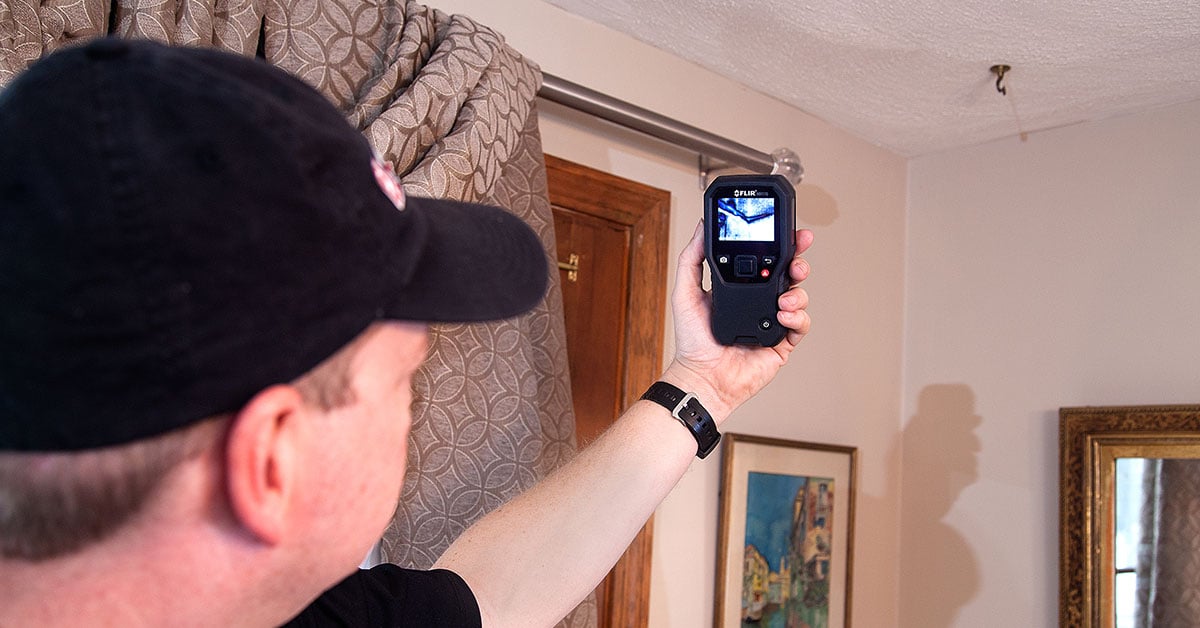Water Leak Detection: Exactly How to Determine and Fix Leaks Prior To They Trigger Damage
Water Leak Detection: Exactly How to Determine and Fix Leaks Prior To They Trigger Damage
Blog Article
Innovative Solutions for Early Discovery of Water Leaks in Structures and Facilities
As the honesty of structures and infrastructure is critical, the difficulty of early discovery of water leaks has stimulated ingenious options that promise to revolutionize the way we safeguard versus possible problems. From cutting-edge leakage discovery modern technologies to the deployment of IoT sensors for real-time monitoring, the landscape of leak prevention is advancing quickly. Maker learning formulas use a glance into the future of leakage prediction, while thermal imaging provides a non-intrusive approach for determining concealed leakages. Automated water circulation analysis systems are reshaping just how leakages are recognized and dealt with, leading the way for an aggressive approach to water leakage detection. Each of these services holds the essential to making sure the reliability and durability of our constructed environment, prompting a change in the direction of a much more lasting and reliable future.
Advanced Leakage Discovery Technologies
Advanced leakage detection modern technologies, geared up with sophisticated sensing units and formulas, play an important role in promptly identifying and identifying water leakages in different settings. Electromagnetic sensors can recognize adjustments in electro-magnetic areas created by water, supplying yet an additional layer of leakage detection capability.

IoT Sensors for Real-Time Tracking
In the world of contemporary water leakage discovery, the integration of IoT sensors for real-time surveillance stands for an essential advancement in enhancing positive leakage discovery capabilities. These sensing units provide continual monitoring of water systems, supplying real-time information on water circulation rates, stress variants, and temperature adjustments. By leveraging IoT technology, these sensors can spot also the smallest abnormalities in water use patterns, enabling early recognition of prospective leakages before they intensify right into significant concerns.
IoT sensors transfer data to a central system, where advanced formulas examine the information and produce notifies or alerts when abnormalities are discovered. This real-time tracking capacity allows building proprietors or center supervisors to quickly resolve leaks, reducing water damage, reducing fixing expenses, and saving water sources.
Moreover, IoT sensors can be incorporated with building management systems, enabling computerized responses to discovered leaks, such as turning off water shutoffs or triggering pumps to reduce the influence of leaks. Overall, the application of IoT sensing units for real-time monitoring significantly improves the effectiveness and efficiency of water leakage detection in buildings and framework.
Artificial Intelligence Algorithms for Leakage Forecast

One secret advantage of using artificial intelligence for leak prediction is its capacity to continually discover and enhance its accuracy gradually. As more data is gathered and fed right into the formula, it can fine-tune its predictions and adapt to transforming conditions, inevitably increasing the integrity of leak detection systems.
In addition, device discovering algorithms can assist in identifying refined indicators of leakages that may go undetected by typical surveillance methods. water leak detection. By evaluating complex data embed in real-time, these formulas can give early useful content cautions and alerts, permitting timely treatment and preventive upkeep to reduce prospective water damage and associated costs
Utilizing Thermal Imaging for Leakage Detection
Thermal imaging modern technology offers an appealing strategy for detecting water leakages in numerous systems and frameworks. By utilizing infrared radiation and temperature level variations, thermal imaging video cameras can recognize hidden leaks that are not conveniently noticeable to the nude eye. When water runs away from pipes or frameworks, it typically transforms the temperature of the bordering location, developing temperature differentials that thermal cams can catch. These temperature irregularities are after that translated into noticeable photos, highlighting the precise place of the leakage.
One of the vital advantages of thermal imaging for leak detection is its non-intrusive nature. Unlike traditional approaches that might need getting into wall surfaces or floorings to locate leakages, thermal imaging allows for non-destructive testing. This not just conserves time and reduces costs yet likewise minimizes disruption to the structure or infrastructure being examined. Furthermore, thermal imaging can quickly scan large locations, giving a comprehensive review of possible leak sources in a prompt manner. In general, the use of thermal imaging technology improves the performance and accuracy of water leak discovery, making it a useful device for maintaining the integrity of structures and infrastructures.
Automated Water Flow Analysis Systems
Just how can computerized water flow analysis systems transform the discovery and monitoring of leaks in different systems and infrastructures? Automated water circulation evaluation systems provide an aggressive approach to leak discovery by continuously keeping an eye on water circulation rates and patterns. By establishing standard data, these systems can quickly identify variances that might suggest a leak, making it possible for timely intervention to prevent extensive damages.
These systems use advanced formulas to examine real-time information and offer prompt alerts when abnormalities are detected, permitting speedy activity to be taken. Additionally, computerized water flow analysis systems can be incorporated with building management systems or IoT systems, enhancing general effectiveness and allowing remote tracking capacities.
In addition, the data accumulated by these systems can be used for predictive upkeep objectives, assisting to determine possible weak factors in the framework prior to leaks happen. In general, the implementation of automatic water flow evaluation systems can dramatically improve leak discovery and monitoring techniques, inevitably causing cost savings, minimized water waste, and increased try these out sustainability in buildings and framework.

Verdict
In conclusion, the integration of innovative leakage discovery modern technologies, IoT sensing units, equipment knowing algorithms, thermal imaging, and automated water flow analysis systems offers innovative solutions for early detection of water leakages in buildings and framework. These technologies make it possible for real-time monitoring, prediction of leaks, and efficient detection methods browse around this web-site to protect against water damage and wastage. Implementing these solutions can aid in keeping the honesty and sustainability of water supply in various settings.
Report this page